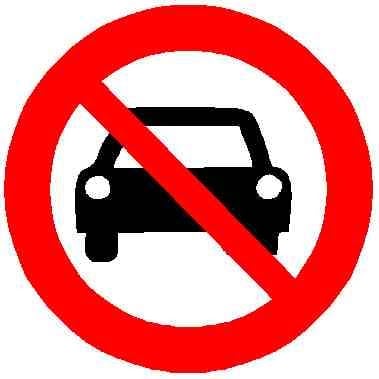







Very informative, worth watching.


Good on California for understanding and being decent


There’s only 9 college’s in the USA!?


Now add into this total the amount of surface area taken by paved roadways.
What really gets me each time, is how unnecessarily wide most, if not all roadways are in cities and urban areas.
You have streets that are two dedicated lanes in one direction, but the total width is close to 3.5 cars. When you add this up for a typical 2 lane street with two lanes of travel each way, you get a street that becomes close to 6-7 cars wide. All to accommodate parking near the curb on certain hours of the day.
I find it so strange that cities spend so much tax dollars and budget to provide publically funded street parking. The cost to repave these wide streets every few yeara adds up exponentially and eats away at a cities annual budget.
Streets and lanes should only be as wide as the car traveling down them, and street parking should not be a thing at roadway level. Business should provide their own lots ideally with cobblestone to help with rainwater runoff, and this space the city paves over should be taken back as proper sidewalk space and green space, with the addition of cycling paths.


Imagine if cars only now started to become a thing and we were living in a walkable city with viable public transportation.
We would probably as a society question why do cars need to be so large and require massive empty parking lots.
It would be crazy to pave over a whole park in the center of a green walkable town.


Absolutely, hopefully these “true costs” can be accounted for, imagine for example the price of gas without government handouts, or the costs of traffic lights, street signs, and roadways.


Seems like a good thing, cars starting to show their “true cost”.
Now if only all the other external costs would be accounted for.


That depends where your VPN is.
Say you access a VPN located over seas from your phone while on mobile data. Then your traffic is encrypted and your mobile data provider (for your phone) should only see traffic to one IP address.
Say you access the same VPN while at home connect to wifi or Ethernet on a PC (or on your phone), then your ISP should only see traffic to the one IP address (that’s located over seas).
Now let’s say your are tech savvy enough to run a Wireguard setup and or Tailscale setup at home and make your own VPN. Then you access that from work or from overseas with a mobile phone or laptop. All your traffic should now show as connecting to your homes IP address directly, but keep in mind your home ISP provider then sees you connecting to sites like Google, Facebook, or Lemmy.


I wonder if elephants have bed time stories about tooth fairies that come and steal your teeth


Will someone think of the poor oil and gas industry?! /s


This goes both ways right?!


“You can’t sensor us!” - Fascists
"You need to sensor them!! " - Also Fascists


And not to mention cars not crossing two pedestrian crosswalks at the same time. The design is a win win for every body!



Is that a grenade launcher?!


Considering my past experiences leaving NFL stadiums after a game, not well.
You can be stuck in the parking lot (in your car) for hours after a game ends, and only move a few feet/meters.
Most stadiums are surrounded by a sea of alsphalt, and in some cases adjacent to one or two Interstates Hwys.



And on top off that FIFA is also selling NFTs that might get you the opportunity to potentially buy a ticket.
The whole process is bordering on gambling.
Your are gambling buying tickets for a match between two teams that might not play, and gambling buying NFTs to be chosen to be put in a draw to buy tickets.


And for everything else there’s MasterCard